How much does the weight vary across different running shoe sizes?
This guide would not have been possible without the help Running Warehouse Europe (and US). While we have hundreds of shoes in our lab at RunRepeat, obtaining the complete set of numbers for each shoe is a different story altogether. That's why we reached RW, as they were the clear choice to help us gather this crucial data. Thank you so much Running Warehouse!
This guide delves into the world of running shoe weight differences, a factor often overlooked. While many might assume that both shoes in a pair weigh the same, and that differences between sizes are consistent, the reality is more complex. In this article, we'll explore the factors that contribute to these weight variations. By learning these details, you'll better understand your running shoes and their weight differences.
Let's start! After our examination of these 4 popular running shoes, we have arrived at a clear conclusion: the weight differences between all running shoe brands are generally consistent, and any outliers can be attributed to manufacturing tolerances.
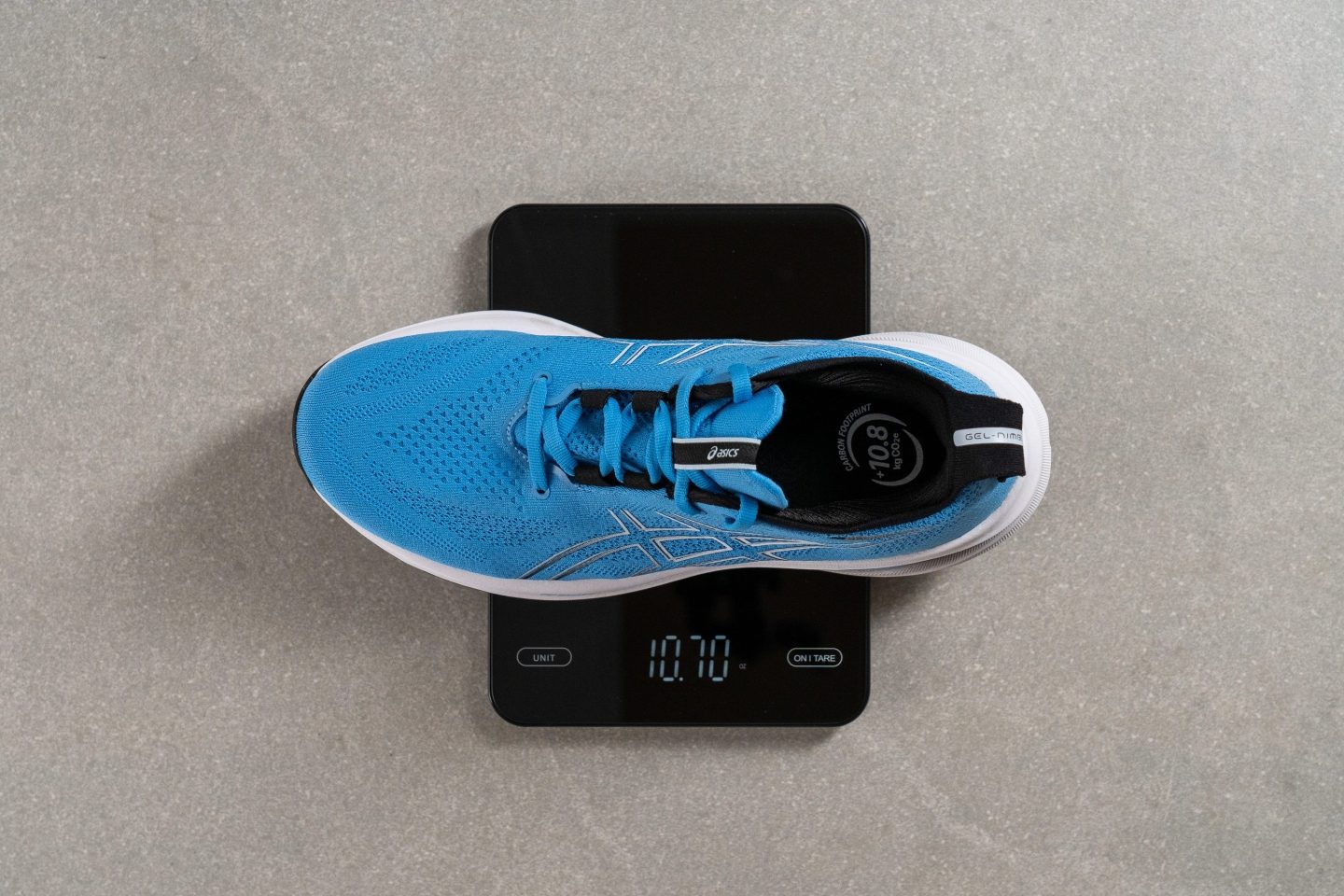
Our findings are particularly useful as they allow you to estimate the weight of any running shoe by adjusting the weight by 2.6% for every half size up from the base weight. This percentage represents the median weight difference observed across all previous sizes.
To illustrate, if you want to get the weight of a Nike Streakfly in size US 10, based on a US 8.5 weight of 166g, simply add 2.6% for each half size up. The estimated weight for the US 10 size would be 179g. This calculation will give you a pretty decent estimate!
How much does the weight increase between sizes?
We examined more than 40 pairs of shoes to come up with some interesting tidbits. And some of the insights were really unexpected:
| US Size | Pegasus Trail 4 (g) | Gel Kayano 29 (g) | Adidas Adistar 2 (g) | Saucony Ride 15 TR (g) | Average (g) |
| 8 | 264 | 289 | 315 | 259 | 282 |
| 8.5 | 272 | 298 | 326 | 263 | 289 |
| 9 | 285 | 308 | 335 | 269 | 299 |
| 9.5 | 295 | 309 | 338 | 279 | 305 |
| 10 | 306 | 327 | 354 | 278 | 316 |
| 10.5 | 306 | 324 | 372 | 284 | 321 |
| 11 | 323 | 339 | 369 | 289 | 330 |
| 11.5 | 328 | 346 | 386 | 306 | 342 |
| 12 | 335 | 359 | 394 | 307 | 349 |
| 12.5 | 341 | 369 | 397 | 322 | 357 |
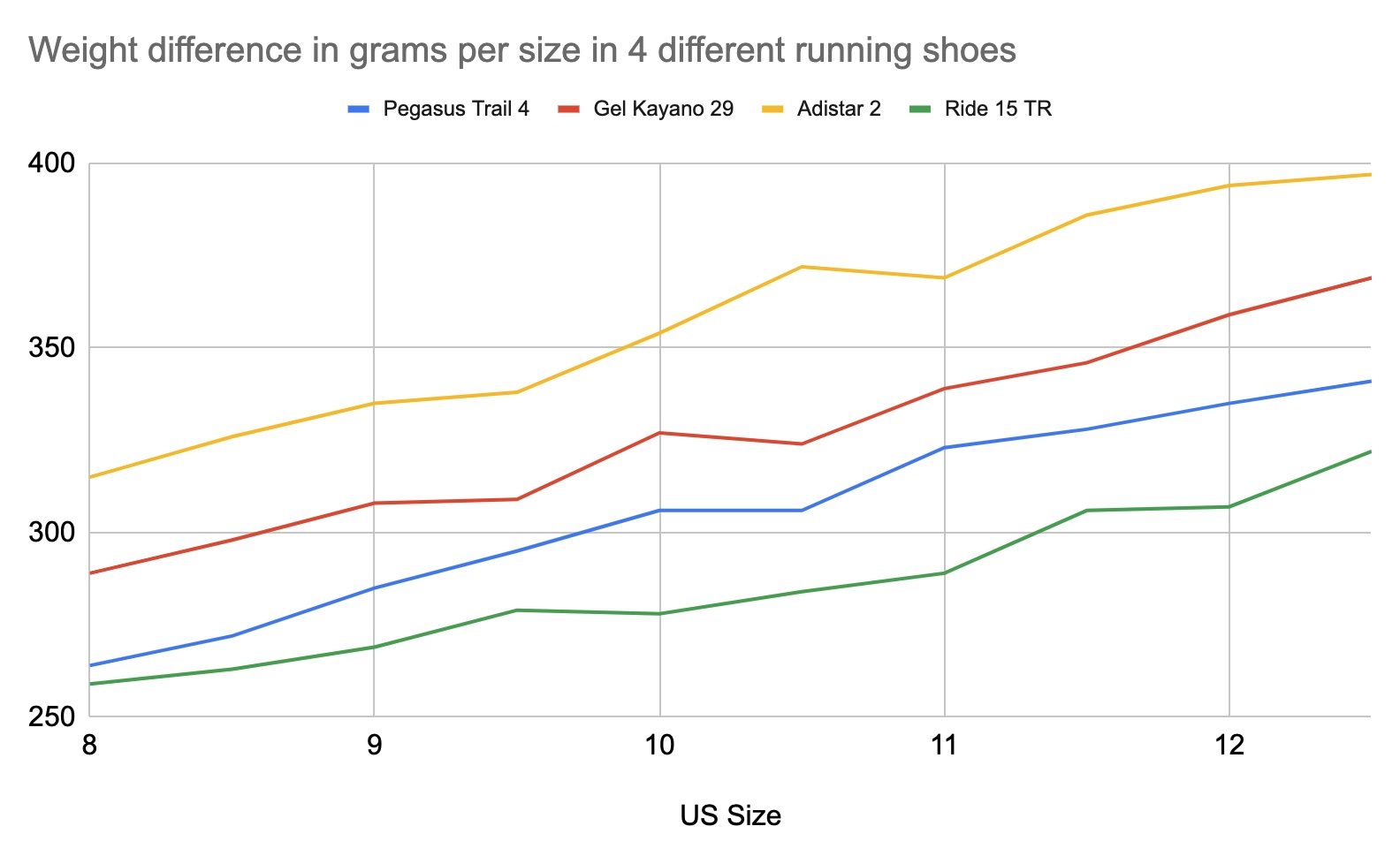
This is what we concluded after examining the data:
- Noticeable differences truly exist. For example, when switching from a US 10 to a US 10.5 in the Pegasus Trail 4, there is no weight increase, while making the same change in the Adidas Adistar 2 results in a mind-boggling 18g increment. That’s crazy!
- Weight increments are relatively consistent between sizes, ranging from a modest 1.66% to a more significant 3.60%. While this may seem excessive for some, it's merely a 5g to 10.8g difference in a 300g running shoe. You won't perceive such a minor variation while running, and it won't impact your gait.
- The disparity between the smallest size analyzed (US 8) and the largest (US 12.5) is also fairly consistent across all models. The Nike Pegasus Trail 4 exhibited the most significant change (29.17%), while the Saucony Ride 15 TR had the smallest (24.32%). In between these two, we observed the ASICS Gel Kayano 29 (27.68%) and the Adidas Adistar 2 (26.03%).
Is it a good idea to go half size smaller for your races?
As we thoroughly discussed in our guide on running shoe uppers, scientific research has shown that a shoe's weight significantly affects your performance in a race. Specifically, if your racing shoe exceeds 220 grams, it may negatively impact your performance.
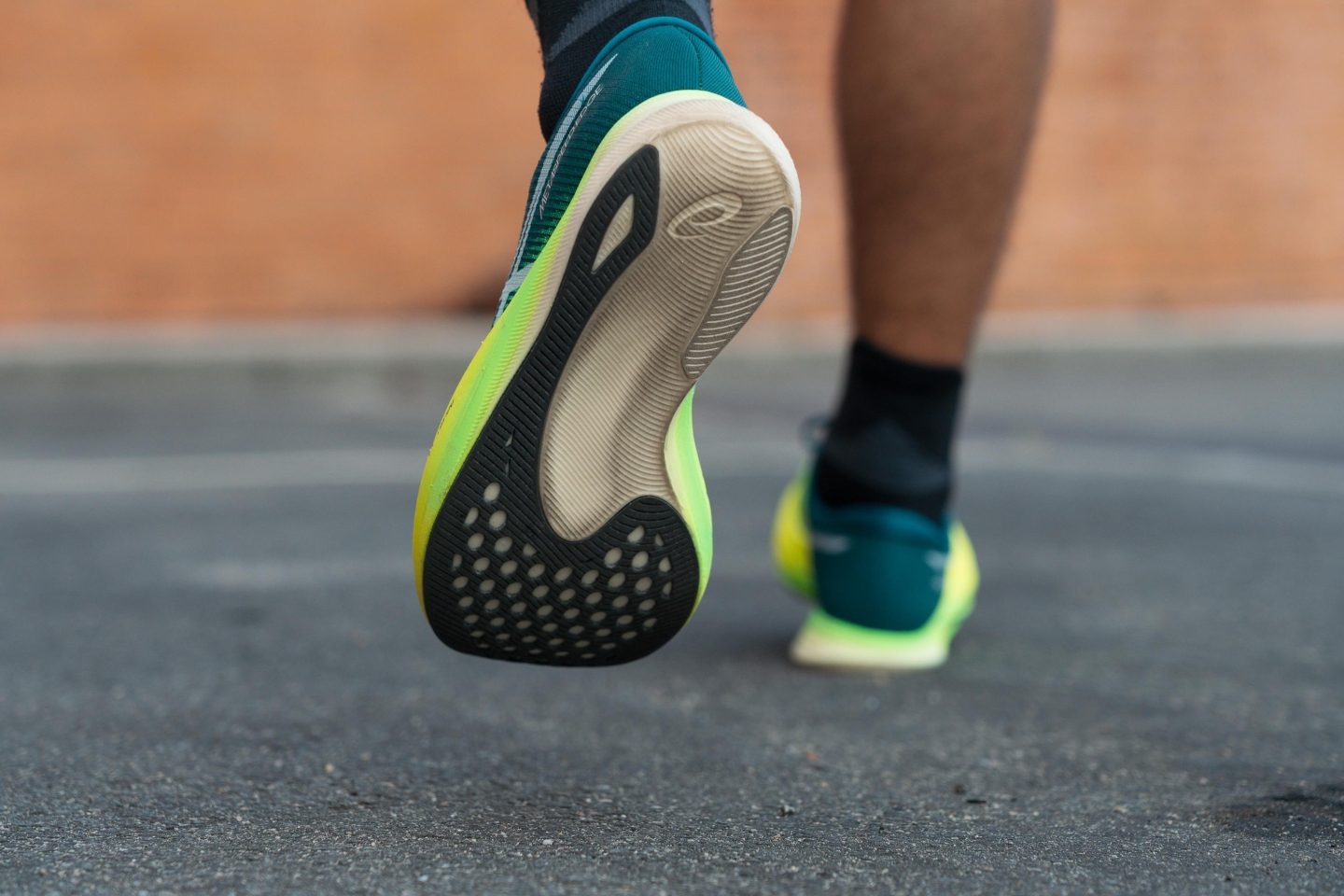
With that in mind, you might be tempted to choose a half size smaller for your next road racing shoe to shave off a few grams, right? However, we don't recommend this.
While you might gain a 1 or 2 second advantage in your next half marathon, racing in a shoe that's too small can lead to disastrous consequences from the early stages of the race. This could not only cost you minutes instead of seconds but may also force you to withdraw from the race. It’s just not worth the risk.
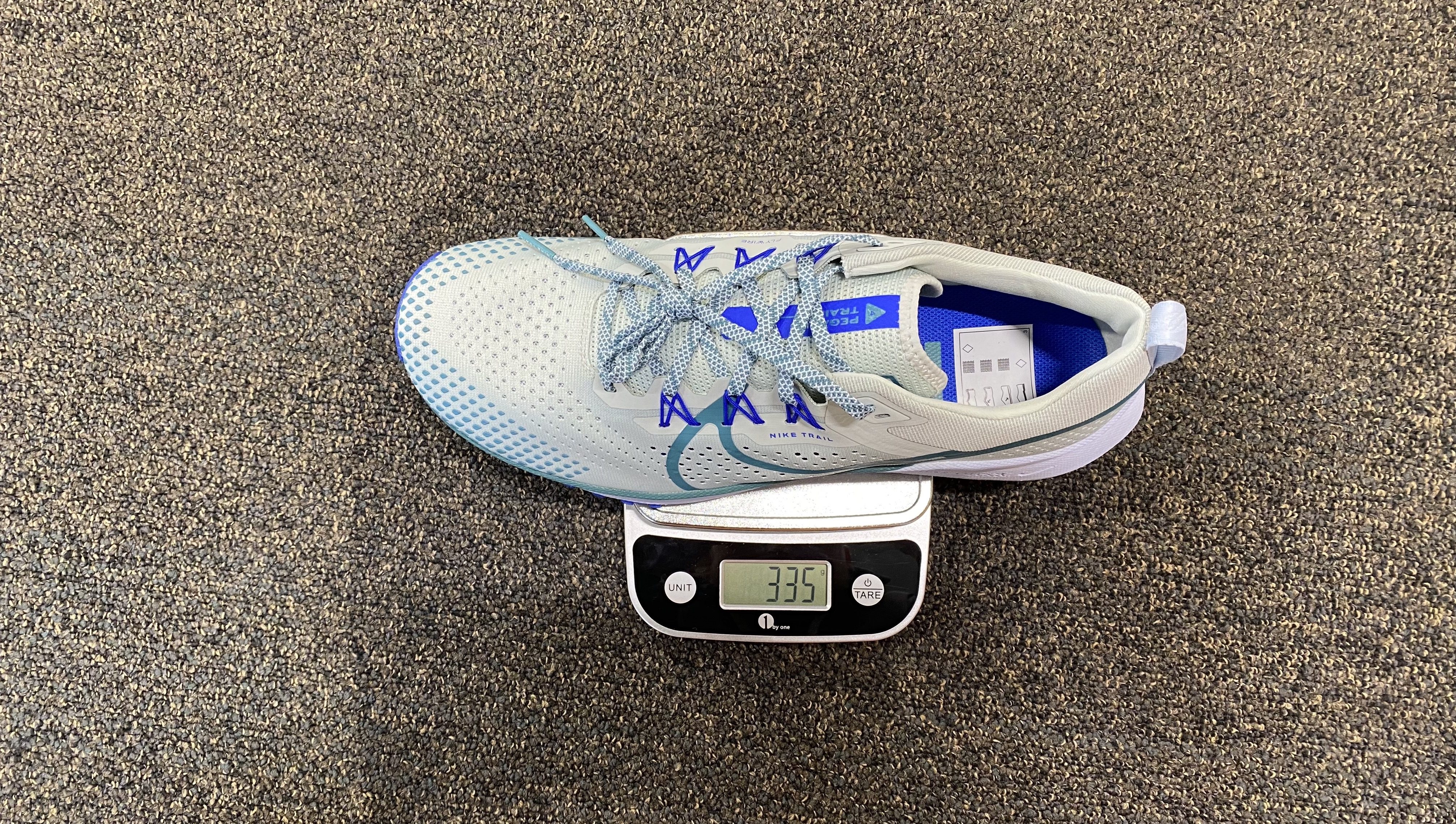
Manufacturing tolerances greatly influence shoe weight
Head over to where you keep your running shoes and pick up the right one, followed by the left one—of the same model. Do you think they have the same weight? Well, it's quite likely that there are noticeable differences in weight between the two shoes.
Running shoe manufacturing is a complex process involving various materials, components, and techniques. However—despite the obvious advancements in technology that we witnessed in recent years—there can still be some variation in the final product due to manufacturing tolerances. These tolerances are acceptable deviations and can lead to slight differences in the weight of each shoe.
The most common example of this is when a left shoe weighs more or less than the right shoe. This discrepancy can be attributed to several factors during the manufacturing process. For instance, there might be small variations in the thickness or density of the materials used for the shoe's upper, midsole, or outsole. And there can also be some weight differences due to varying amounts of glue or stitching.
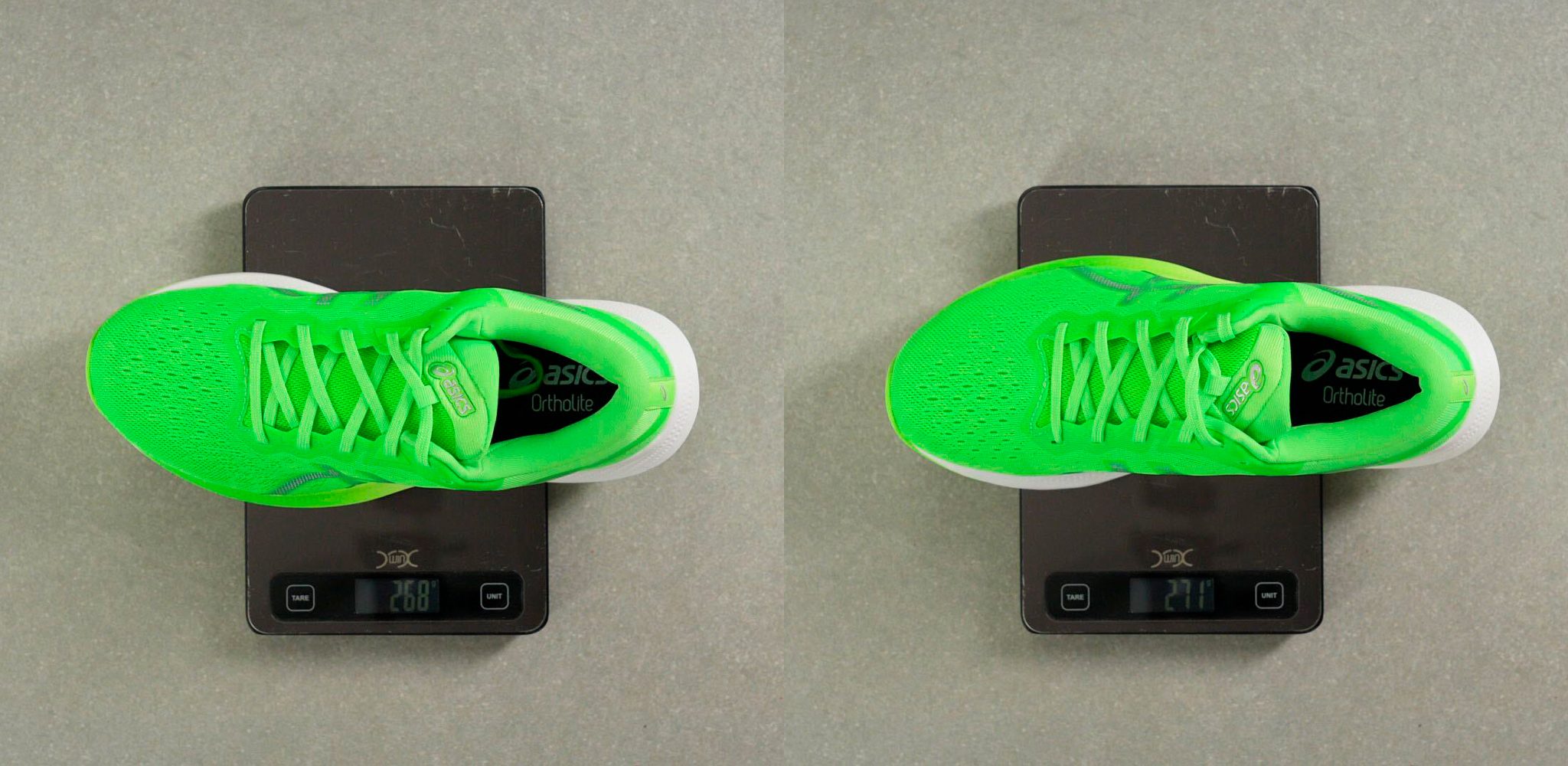
Another aspect to consider is the human element. While machines and automation have come a long way in ensuring consistency, some aspects of shoe production still require manual labor, and brands require those workers to go as fast as possible. This can lead to slight inconsistencies in the final product.
Naturally, in true RunRepeat fashion, we decided to weigh some shoes in our lab to determine the extent of these differences.
| Shoe | Left (g) | Right (g) | Change (g) |
| Hoka Challenger | 236 | 232 | 4 |
| Hoka Solimar | 218 | 217 | 1 |
| ASICS Gel Pulse 13 | 268 | 271 | 3 |
| Salomon Ultra Glide | 256 | 256 | 0 |
| ASICS Gel Venture 9 | 296 | 301 | 5 |
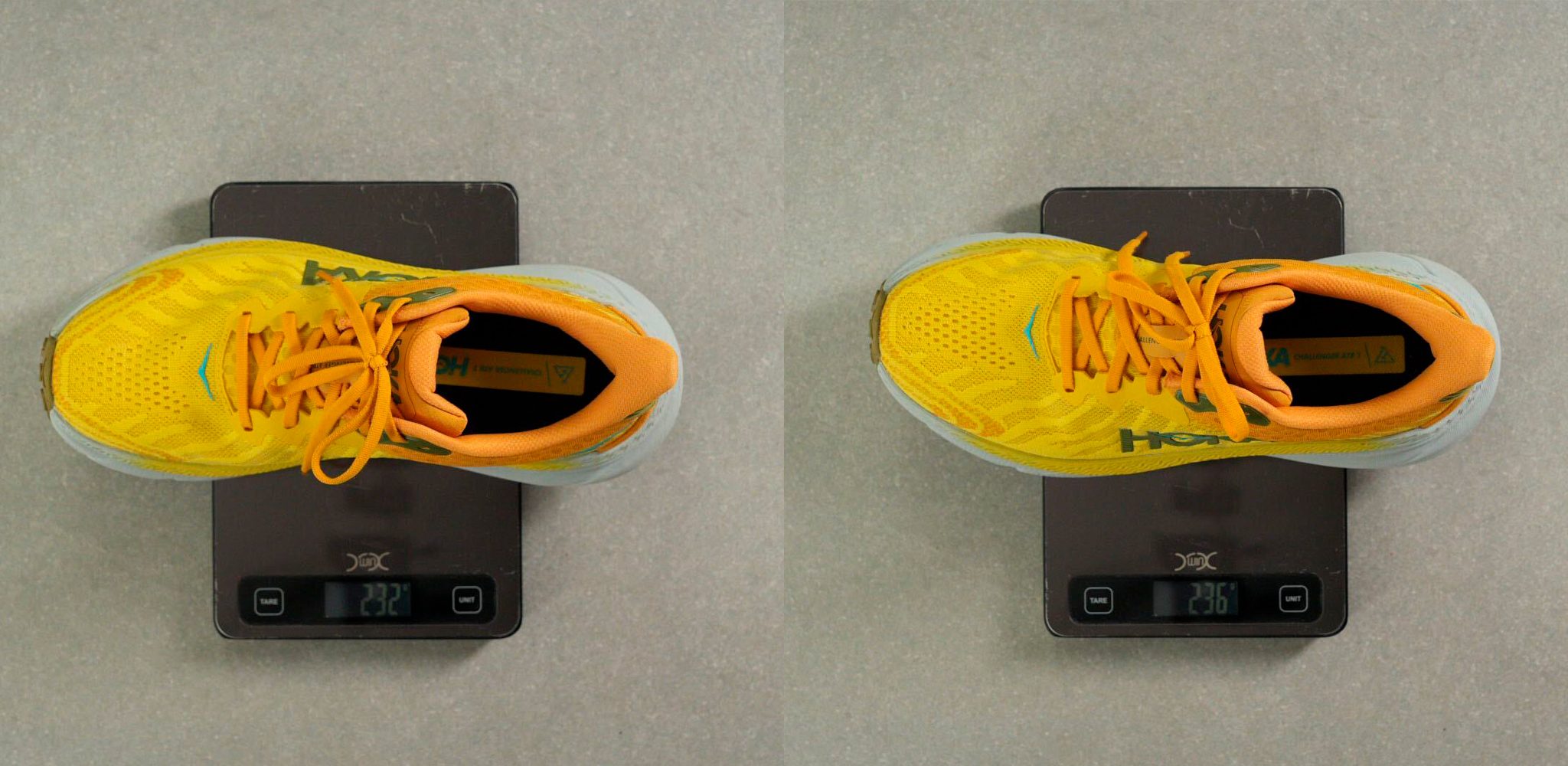
This clearly explains that, in some cases, it's possible for a smaller-sized shoe to be similar or even heavier than its half size larger counterpart.
